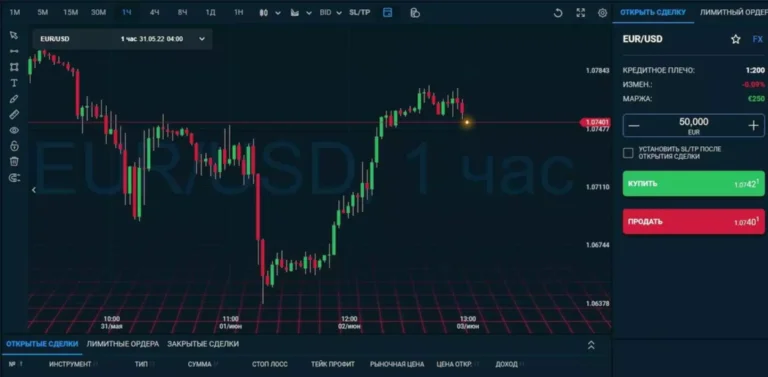Content
Several other chains use proof of stake—Algorand, Cardano, Tezos—but Proof of stake these are tiny projects compared with Ethereum. So new vulnerabilities could surface once the new system is in wide release. And though staking is not as directly damaging to the planet as warehouses full of computer systems, critics point out that proof of stake is no more effective than proof of work at maintaining decentralization. Later on, a technique called “rollups” will speed transactions by executing them off chain and sending the data back to the main Ethereum network.
How Much Can I Earn From Staking ETH?
Additionally, validators must ensure uninterrupted uptime to avoid penalties, making it best suited for advanced users who can commit to managing their infrastructure, not new entrants into the staking world. Validators, selected based on their staked ETH, propose and confirm new blocks. You can stake individually, https://www.xcritical.com/ join staking pools, or use third-party services. After the merge, you’ll eventually be able to run smart contracts on mainnet Ethereum using proof of stake rather than proof of work. You’ll also be able to withdraw any ETH you’ve staked on Ethereum 2.0.
Is staking Ethereum better than mining?
The first block of each epoch (a period of 32 slots where the validators propose and attest for blocks and is of 6.4 minutes) is a checkpoint. Even after a transaction is confirmed as part of the most recent block, what is proof of stake it doesn’t mean it can’t be changed or undone. For a short period that follows, a transaction may be vulnerable to attacks from bad actors who try to exploit weak points in the blockchain. Through the Ledger Live app, you can easily and securely stake Ethereum coins to a validator and start earning ETH rewards, passively.
Q. Why is proof of stake seen as an upgrade from proof of work?

They are penalized for not following through with their responsibilities when it is their turn to do so – i.e. if they are offline. Penalties for being offline are relatively mild and equate to about the same as the expected rewards over time. So, if a validator is participating correctly more than half the time then her rewards will be net positive. In 2020, the first phase of Ethereum 2.0 will go live, marking an overhaul of the existing Ethereum 1.0 blockchain and notable improvements in scalability and accessibility. The core of the Ethereum 2.0 architecture is the Proof of Stake (PoS) consensus mechanism, which will replace the existing Proof of Work (PoW) consensus mechanism. Ethereum staking offers a unique combination of financial growth and active participation in the blockchain ecosystem.
Can I become an Ethereum validator or staker?
Crypto analysts predict that Ethereum could hit new all-time highs in either 2024 or 2025, depending on how the crypto market performs. This bullish outlook is based on the recent Bitcoin halving event last Apr. 19, 2024 and the increasing adoption of Ethereum in DeFi, NFTs, gaming and the metaverse. The recent approval of spot ETH ETFs have also caused a surge in Ethereum’s price to $3,935. According to Techopedia, Ethereum could reach ATHs $6,500 in 2024 and $8,700 in 2025.
This means that when more validators are slashed, the magnitude of the slash increases. The maximum slash is the full effective balance of all slashed validators (i.e. if there are lots of validators being slashed they could lose their entire stake). On the other hand, a single, isolated slashing event only burns a small portion of the validator’s stake. This midpoint penalty that scales with the number of slashed validators is called the “correlation penalty”.

Proof of stake, the approach Ethereum now uses, does away with this massive energy consumption. Instead of miners, proof-of-stake systems employ vast numbers of “validators.” To become a validator, you have to deposit, or “stake,” a set amount in coins—32 ether, in the case of Ethereum. Staking gives validators a chance to check new blocks of transactions and add them to the blockchain so they can earn rewards on top of their staked coins. The more coins you stake, the better your odds of getting picked to add the next block of transactions to the chain.
This requires the attacker to divert the path of honest consensus either by accumulating a large amount of ether and voting with it directly or tricking honest validators into voting in a particular way. Sophisticated, low-probability attacks that trick honest validators aside, the cost to attack Ethereum is the cost of the stake that an attacker has to accumulate to influence consensus in their favour. Proof-of-work is much more energy-hungry because electricity is burned in the mining process.
Only the miner who achieves this first will confirm the block and be rewarded. In this system, energy is the resource the network uses to secure itself. The huge amount of energy required to overcome the blockchain’s consensus mechanism is a key deterrent for bad actors.
It would be hard to overstate how much industry excitement there has been around this shift. Many hope it can both rehabilitate the reputation of crypto for skeptics and improve the efficiency of Ethereum’s enormous ecosystem of businesses and developers. Google even created a countdown clock featuring white and black bears, a nod to a meme about the event. No one knows exactly what the cryptocurrency platform’s big upgrade has in store for the industry. Of course, Ethereum’s move to proof of stake has been six months away for years now.
- Those with less blockchain expertise can stake via centralized services like those offered by Coinbase (COIN) or Kraken.
- Whoever wins gets to append the next block and collect new coins in the process.
- The network attempts to maintain a consistent block time (the time between each block); Ethereum is mined every ~14 seconds and Bitcoin is mined every ~10 minutes.
- PoW and PoS are mechanisms for adding blocks that contain transactions to the blockchain, as well as for verifying and reaching a consensus that the transactions are correct.
- When Ethereum launched, proof-of-stake still needed a lot of research and development before it could be trusted to secure Ethereum.
- It increases the block size limit to 32 MB in an effort to solve the scalability issues with Bitcoin, therefore facilitating speedier transactions.
Under optimal conditions, there is no need for a fork choice rule because there is only one block proposer per slot and one block to choose from. Occasionally, though, multiple blocks for the same slot or late-arriving information leads to multiple options for how blocks near the head of the chain are organized. In these cases, all clients must implement some rules identically to make sure they all pick the correct sequence of blocks. A. Proof of stake (PoS) is seen as an upgrade to proof of work (PoW) for its efficiency. PoS uses far less energy and scales better than PoW’s compute-intensive mining.
The vast majority of bitcoin mining today is done with five major mining pools. In proof of stake, those with the majority of coins control the blockchain. With Proof of Work (PoW) consensus mechanisms, a new block can only be added if the block hash is calculated via an incredibly complex equation. It can take trillions of guesses before that value is randomly discovered by a miner.
Each transaction on a blockchain is recorded as a ‘block’ of data and must be verified by peer-to-peer computer networks before being added to the chain. This system helps secure the blockchain against fraudulent activity and double-spending. Ethereum needs to move to proof of stake so it doesn’t further exacerbate the environmental horrors of Bitcoin. The question is, will its new system fulfill all the promises made for proof of stake?
PoS chains, however, “know” who the validators on the network are (more specifically, there is an address attached to each deposit, and therefore to each validator node). Whereas PoW requires the tradeoff of security to achieve scalability, PoS networks can achieve both through sharding. Validators are the participants on the network who run nodes (called validator nodes) to propose and attest blocks on a PoS blockchain. They do so by staking crypto (in the case of Ethereum 2.0, ETH) on the network and make themselves available to be randomly selected to propose a block.
Most blockchains, including bitcoin’s, devour large amounts of energy, sparking criticism from some investors and environmentalists. The proof-of-stake mechanism radically changes how the Ethereum blockchain works. It eliminates the need for mining new blocks as the network is now secured using staked ETH and validators. Previously, the Ethereum blockchain relied on proof-of-work, a consensus mechanism that requires a lot of computational effort from all the decentralized nodes participating in the blockchain. Using this common history, they assess whether new blocks of transactions are valid.

